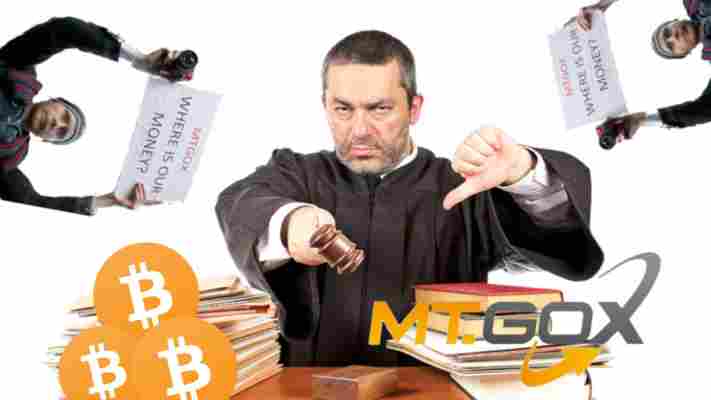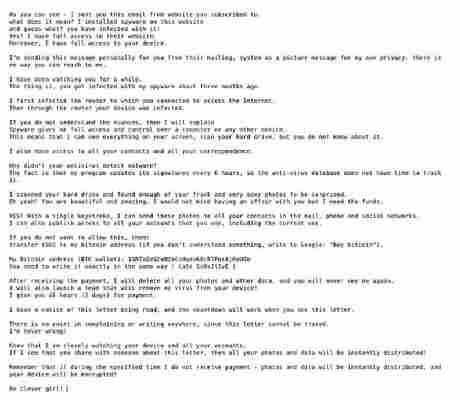Mt. Gox’s ex-owner Mark Karpelès is due to face court in Japan this Friday, which means the long-running case of its “missing” Bitcoin is reaching a crescendo. It’s been over five years since Mt. Gox filed for bankruptcy, and it’s a pretty messed up story.

Climbing Mt. Gox
Mt. Gox was one of the first Bitcoin exchanges on the web, but it wasn’t always related to cryptocurrency. Back in 2007, programmer Jed McCaleb purchased the mtgoom domain for an online trading platform for virtual cards used in the game Magic: The Gathering.
Fast forward a few years to 2010, and McCaleb saw an opportunity to create a place for people to exchange their fiat currency to and from Bitcoin. On July 18, 2010 , McCaleb launched mtgoom in the form that most came to know it, as a Bitcoin exchange.
McCaleb’s involvement in Mt. Gox as a Bitcoin exchange was short-lived, he sold the platform to French born developer Mark Karpelès about a year after he got his idea off the ground.
Karpelès at the helm
It was under the control of Karpelès that Mt. Gox would witness a series of hacks and scandals that would lead to the platform’s eventual demise. But it wasn’t without becoming the world’s leading Bitcoin exchanges by 2013. At one point, Mt. Gox was handling around 70 percent of the world’s Bitcoin trades (by volume).
The first major crisis for Mt. Gox came in June 2011, just months after Karpelès took over. Mt. Gox claimed a “compromised user account,” was exploited to make the price of Bitcoin fall from $17 to just cents in a matter of minutes, Ars Technica reported at the time. This price crash was exclusive to Mt. Gox and the hack did not affect the underlying Bitcoin protocol.
Another report stated that 25,000 coins were presumed missing or stolen from 478 different user accounts. These coins were valued at over $8.5 million at the time. Mt. Gox admins took the exchange offline while they tried to rectify the situation.
This was a process that would become all too common for the exchange. Over the years between 2011 and 2013 there was a string of breaches, hacks , scandals , and lawsuits that would plight the exchange – and eventually lead to its foreclosure.
The end is coming
On February 4, 2014, Coindesk held a poll to find out how many Mt. Gox users had experienced withdrawal issues. In some cases, users still hadn’t received their funds even weeks after they had requested withdrawal.
A BitcoinTalk forum thread amassed over 3,000 posts that featured claims of being unable to access Mt. Gox funds, Coindesk reported at the time.
On February 7, 2014, Mt. Gox cancelled all Bitcoin trading, froze accounts, and took a step back to take stock of what was actually going on. Ten days later, the exchanged published a statement . It claimed it had rectified the situation, and that it was now on course to correct customer losses and resume trade.
But by the end of the month Mark Karpelès had stepped down from his role at the Bitcoin Foundation, and the firm’s fate was sealed. It disclosed over 740,000 of users’ BTC ( $2.9 billion , today’s value) had been stolen in a hack that it claimed had been ongoing for years. At the time, that amount was valued at around half a billion dollars .
On February 28, 2014, the exchange accepted its fate and filed for bankruptcy in Tokyo. It would also file for bankruptcy in the US later in March.
After 18 months of legal proceedings and attempted court-led restructures, Karpelès was arrested on embezzlement charges , in August 2015. Authorities claimed Karpelès had manipulated Mt. Gox’s computer programs to manipulate its balance sheet in order to artificially increase funds in one of its accounts.
Despite the case against him, Karpelès continues to maintain his innocence. At a recent trial, he said (in Japanese): “I swear to God that I am innocent,” AFP reports .
Litigation for victims of Mt. Gox’s crumbling
Since Karpelès’ arrest, Mt. Gox creditors (read: victims) have faced an arduous journey. It took until August of last year for things to finally start looking up for victims of the scandal.
Many creditors were forced to take it upon themselves to campaign for their Bitcoin back. But not long after, news broke that stated Mt. Gox’s litigators were finally prepped to repay those that had been affected by the collapse of the once dominant exchange.
Indeed, those affected by Mt. Gox’s collapse must be anxious, especially those that are yet to be repaid. The outcome of Karpelès trial will surely have an impact on how the litigation process continues, and the beginning of the end starts this Friday, finally.
Want to find out more about cryptocurrencies and blockchain technology? Check out our Hard Fork track at TNW 2019 !
EOS and TRON’s most used dapps are either gambling or ‘high risk’
There’s an endless war fought for the attention of blockchain developers. Projects like Ethereum, EOS, and TRON all push their different visions of the tech, often with attempts to define success by how many dapps each network supports, and how big their userbases are.

Well, over the past few months, cryptocurrency gamblers have left Ethereum’s gambling dapps en masse , with data showing they’re now betting on casino dapps hosted by rival blockchains.
Today, Hard Fork reviewed data pulled from DappRadar , a service that tracks dapp usage across those three blockchains, to see exactly what kinds of dapp activity each network is attracting.
More than half of ETH’s top dapps are blockchain-based games
Back in late January, data showed just 2 percent of Ethereum‘s US-dollar transactional volumes could be attributed to gambling dapps.
By contrast, 70 percent of overall traffic on EOS was the result of cryptocurrency betting activity; for TRON, more than 95 percent of its network activity was gambling-related.
For this research, we focused purely on the number of related transactions processed (not their value) in the past 24 hours, which is DappRadar’s default setting for sorting dapps.
Looking at Ethereum, just two of the top 25 dapps relate to gambling, and more than half are blockchain-based games like CryptoKitties .
Around one-quarter of Ethereum‘s top dapps are platforms for trading and converting tokens and cryptocurrencies, like exchange service IDEX. Two are labeled “marketplaces,” which act as auction houses for collectible Ethereum-based tokens.
EOS and TRON have SO many ‘gambling and ‘high-risk’ dapps
In comparison to Ethereum, most top dapps hosted on EOS and TRON are either labelled as “gambling” or “high-risk” platforms. Remember: just 8 percent of Ethereum‘s most-used dapps wear that label.
For TRON, 18 of the top 25 dapps hosted on its network are flagged as such. Indeed, just two of TRON‘s current “most-used” dapps were found to be actual “games,” and 20 percent of its top dapps are for exchanging and converting various tokens.
“Please do your own due diligence before investing in dapps in the High-risk category (or in any dapp in general),” DappRadar warns. “ If it sounds too good to be true, we advise you to stay away and do not invest in that specific dapp.”
But perhaps the most worrisome is the EOS network . According to DappRadar, 17 of its top 25 dapps are straight-up gambling platforms (68 percent). Two are games, two are exchange/conversion services, and one a “high-risk” platform.
This means that 72 percent of the most-used EOS dapps (at pixel time) are either for gambling or come with explicit user warnings to ensure their online safety.
There are three labeled “Other,” which appear to generally be platforms that aim to reward users for using their native tokens in a variety of ways, such as interacting with other users using the dapp.
Gambling was meant to be an ‘early use-case,’ but 10 years later…
At some point, this industry will need to discuss “transaction quality.” Ethereum uses Proof-of-Work to come to consensus. This (currently) attaches fees to transactions , payable by the user and collected by network participants. This effectively protects the network against being flooded by useless “spam” transactions, as it costs money to submit them for processing.
“Delegated Proof-of-Stake” networks like EOS do not feature such transaction fees in their economic model – “actions” on those blockchains are considered free (or almost feeless), which could be seen as attractive by dapp developers with apps featuring fast-moving and repetitive activity like dice and roulette games.
Earlier this week, finance industry bulwark Weiss Ratings released its annual list top cryptocurrencies . It announced the EOS network was first when it came to the sheer amount transactions processed – 14 times that of Bitcoin and eight times Ethereum’s total count.
Weiss ultimately placed EOS as the number one cryptocurrency, after awarding it high scores using proprietary metrics related to technology and adoption. Taking a look at the data, though, it’s pretty obvious “adoption quality” is one metric nobody has figured out how to define, yet.
Did you know? Hard Fork has its own stage at TNW2019 , our tech conference in Amsterdam. Check it out .
Bitcoin hacker targets Meghan Markle’s friend’s fashion company
Meghan Markle’s designer friend’s Misha Nonoo’s fashion company has been targeted by a Bitcoin hacker.

Nonoo, who is rumoured to have introduced Markle to Prince Charles, said she was “mortified” after a hacker gained access to her eponymous label’s email list and began sending threatening messages.
In an email, written in broken English, the hacker claimed to have access to customers’ devices after installing spyware on the brand’s website.


The hacker then threatened to publish all their photos if they did not send $583 to his or her Bitcoin address.
“I scanned your hard drive and found enough of your frank and very sexy photos to be surprised,” the hacker wrote. “Oh yeah! You are beautiful and amazing. I would not mind having an affair with you but I need the funds.”
In the email, the hacker requested that customers Google ‘Buy Bitcoin’ if they were having issues transferring the funds, claiming their photos and data would be deleted once the payment was received.
“Know that I am closely watching your device and all your accounts. If I see that you share with someone about this letter, then all your photos and data will be instantly distributed!”
Nonoo re-assured customers in an email statement, explaining no payment information had been compromised as a result of the hack.
“It pains me to say that over the weekend a hacker gained access to our email list and sent out an aggressive email to many of you, using scare tactics to try to access information,” the designer said.
“We were alerted to the hack minutes after it occurred and quickly moved to disable our accounts to prevent any further access to email distribution while we investigated the source and extent of the hack,” she added. “We are mortified that such an attack could happen and are treating it incredibly seriously.”
Nonoo’s company is not the first to be targeted by Bitcoin hackers, and it surely won’t be the last.
It goes without saying that businesses need to work harder to protect customers‘ data, but I can’t stress how important it is for civilians to refuse to give in to hackers‘ demands. Whatever you do, don’t pay up!
Hackers will hack – it’s what they do, but we can certainly try and stop them in their tracks.
Did you know? Hard Fork has its own stage at TNW2019 , our tech conference in Amsterdam. Check it out .











